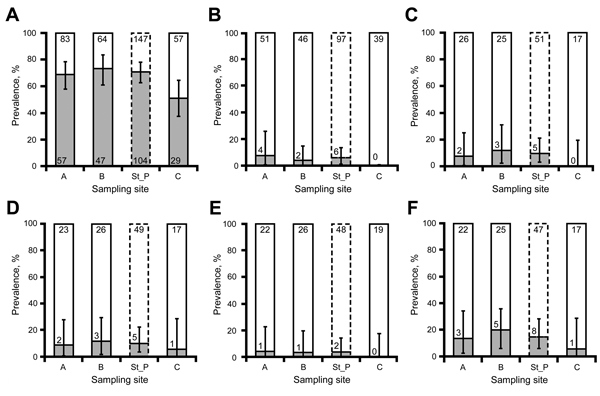Volume 21, Number 6—June 2015
Dispatch
European Rabbits as Reservoir for Coxiella burnetii
Figure 2

Figure 2. Prevalence of antibodies against Coxiella burnetii and C. burnetii DNA in European rabbits (Oryctolagus cuniculus) at sampling location LO, Iberian Peninsula. A) Antibodies; B) DNA in spleen; C) DNA in vaginal swab specimen; D) DNA in uterine swab specimen; E) DNA in uterus; F) DNA in reproductive tract (vaginal swab specimen, uterine swab specimen, uterus). Gray bars indicate seroprevalence. St_P indicates results for sites with ruminants (sites A and B); no ruminants were present at site C. Values at the top of bars indicate number of samples, and values at the bottom of bars indicate number of positive samples. Error bars indicate prevalence-associated exact 95% CIs.
Page created: May 15, 2015
Page updated: May 15, 2015
Page reviewed: May 15, 2015
The conclusions, findings, and opinions expressed by authors contributing to this journal do not necessarily reflect the official position of the U.S. Department of Health and Human Services, the Public Health Service, the Centers for Disease Control and Prevention, or the authors' affiliated institutions. Use of trade names is for identification only and does not imply endorsement by any of the groups named above.